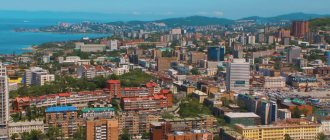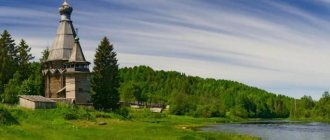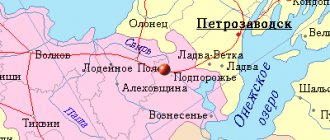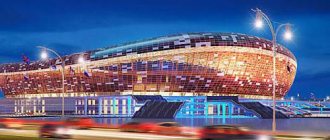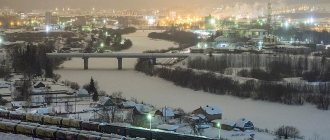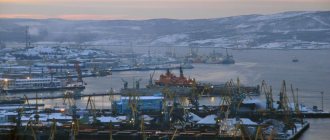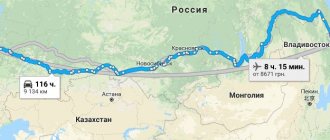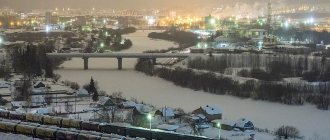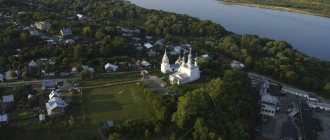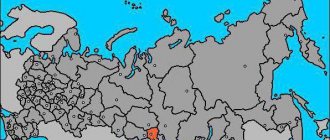The bulk of the population of modern Vladivostok are descendants of numerous peoples who inhabited the Primorsky Territory. In the nineteenth century, by decree of the Russian government calling for the development of the eastern coast, a settlement was formed.
The bulk of the local population are natives of the central regions of the country. Migrants from Asia and Europe, who came here to trade and build, become the determining majority of the ethnic composition, making up the bulk of the local population of the future Vladivostok.
Historical reference
The foundation of the military post, which became a Russian Pacific harbor, dates back to the middle of 1860. According to the decree on encouraging the settlement of the lands of the Amur and Primorsky regions, crowds of free peasants flock here, wanting to make a life. The abolition of serfdom strengthens local migration processes, creating an increase in settlers. 1878 - The harbor population is 4,000 citizens.
A serious factor that determined the development of the demographic situation of Vladivostok is its territorial location. The construction of the Trans-Siberian Railway, which opened a short route to the Pacific coast, the development of international trade routes, economic relations, military intervention by foreign powers - events that contributed to the growth of the population of the center.
Further industrialization of the country, the development of agriculture, education, and medicine significantly increase the level of well-being, contributing to an increase in the birth rate and a massive influx of immigrants. In the 20s The population of Soviet Vladivostok is 100,000 inhabitants, according to the census.
Rise, decline and rebirth
The city developed rapidly, and by 1897 more than 28 thousand people already lived here, and by the revolution the number of residents increased 3 times!
The duty-free porto-franco regime was introduced in Vladivostok in 1907, and the city experienced a real flourishing of trade and culture. And everything was fine, if not for the events of the October Revolution and the partisan war that broke out in the Far East, which tormented Primorye until the end of 1922.
During this period of time, Czechoslovak, American, Canadian, Italian and Japanese troops visited the city with the goal of overthrowing Soviet rule in Vladivostok. It is difficult to imagine which region or region was subjected to the same invasion and plunder. But the government of the young Soviet Republic implemented a multi-year plan to restore the city, which became the industrial center of the Far East.
At the same time, a transformation of administrative units took place, which affected the city of Vladivostok. There was no point in asking what area he belonged to. In 1922, the Primorsky region was abolished, and in 1938 the Primorsky Territory was formed with the administrative center in Vladivostok.
During the Second World War, the city did not participate in hostilities, but was constantly under the threat of attack by the Japanese. But here, the first in the whole country to establish a Defense Fund, which received funds for front-line needs, and the city made a huge contribution to the implementation of the American Lend-Lease program.
Current data
In the last decade there has been a natural increase. 606,561 residents - the number of people living in the district permanently. The table presents data for urban areas.
| District name | Number of citizens |
| Pervomaisky | 155 943 |
| Leninist | 155 306 |
| Pervorechensky | 144 596 |
| Soviet | 92 057 |
| Frunzensky | 58 659 |
Statistics by year
- 1860 - the number of settlers reaches 200 townspeople; the bulk are members of the military crew sent to explore the eastern coast of Russia.
- 1889 - the population reaches 13,000. Moreover, for every four male townspeople there was 1 woman.
- 1900 - representatives of 70 nationalities live in the settlement.
- 1914-1917 During this period of revolutionary unrest, the value decreased - 106,700 citizens.
- 1917 - the number of citizens was 130,000. The end of the civil war and the restoration of the national economy contributed to natural growth.
- 40s - 215 thousand inhabitants.
- 1941-1945 - World War II claims the lives of 25 thousand Soviet natives of Vladivostok.
- 1974 - population reaches 500,400 citizens.
- 1991 - a record figure was registered - 679,000 citizens.
- 1992 - population decline caused by mass migration of local residents.
- 2010 - the figure is 604,800 citizens.
- January 1, 2022 - According to the census, the permanent resident population was 606,651 citizens.
A little bit of history
Initially, the place where the central square of Vladivostok is currently located was a small slope that descended towards a bay called the Golden Horn.
In 1860, a market was formed on this slope. It did not exist for long, until 1907, after which it was moved to the bank of the Amur River.
After the market was removed, a city garden was laid out on a gentle slope, and warehouses were built nearby for storing goods.
From 1937 to 1939, it was intended to build a marine terminal on the site of the city gardens, but this idea was not realized. This is due to the fact that the war began in 1941, which disrupted construction plans.
From 1951 to 1953, the famous city planners A. M. Suvorov and T. L. Shulgina developed a new plan, which included a square in the city center. It was proposed to build a theater and a post office on it. Despite the fact that the construction of these buildings was rejected, the place for the square on the city general plan was nevertheless approved.
Since 1965, the city central square of Vladivostok began to be called the Revolution Fighters Square.
About the city
Vladivostok today is the cultural capital of the Far Eastern Federal District of Russia, a major commercial port of Primorye, and the Pacific base of the Russian military fleet. The city's territory covers 2 peninsulas and 50 small islands. The specificity of its island location gives this city a temperate climate. A cold, windy winter gives way to a rainy, foggy summer.
Over the 160-year history of development, the economy of the coastal center has experienced several ups and downs. 1952-1991 — the city is closed by government decree. Accordingly, access to foreign courts and Soviet citizens is prohibited. 2015 - the port was given the status of a “free zone”, which gives duty-free trade privileges. The bulk of Asian goods are delivered by sea trade transport.
High prices for essential goods, poor ecology, and harsh climate are the main “cons” that determine the assessment of the local population. The average score, according to the rating, is 3. The results of research from the Financial University showed negative dynamics: Vladivostok is losing ground every year. 2022 - the city ranks 68th in the federal city ranking.
Port, naval base and more
Throughout its existence, Vladivostok has been and remains the most important strategic facility with increased defense capability due to the main base of the Russian Pacific Fleet.
Vladivostok is connected to the Sea of Japan by the Amur and Ussuri gulfs. The most important Pacific sea routes for the country’s economy pass here, providing trade links with hundreds of countries around the world. The city is also the largest financial and cultural center of the Far East.
What else is remarkable about the city, which has grown from a small stronghold? This is interesting!
- Sollers automobile plant, manufacturer of Mazda and Toyota.
- Shipbuilding enterprises “Dal.
- Fish processing plants, for example, Dalryba and Dalmoreproduct.
- Far Eastern Federal University, many other universities and their branches.
- Primorsky Oceanarium.
- Primorsky State Art Gallery.
- 5 professional theatres, 21 cinemas, a circus.
If you are traveling to Vladivostok, which region or region you are going to visit, it won’t hurt to know, at least for correctly filling out business documents and so as not to offend Vladivostok residents with your ignorance. State competently: “Vladivostok is the administrative center of the Primorsky Territory!” And enjoy the cultural life of the city, which amazes with its diversity.
Festivals, forums and holidays are held here every year; residents of the city never get bored, and guests are recommended to visit local attractions.
Ethnic composition
The national composition of Vladivostok is represented by many ethnic groups. The main indicator - 86% of the inhabitants - are Russians, Ukrainians - 2.5%, representatives of Korean nationality - 1%, Tatars - 0.5%. The remaining 10% are Chinese, Kazakhs, Uzbeks, Belarusians, Azerbaijanis, and Armenians. The Udege, Nanai, and Taz are part of the indigenous ethnic groups represented by a small national composition.
National traditions, culture, and language of the aborigines are gradually being forgotten. The main language of local residents is Russian; the second position is occupied by English - 6.5% of citizens; third place - Ukrainian language: 1.2%.
Gender and age
Beginning of 2022 - the population of the hero city occupies 26th position in the list of 1115 urban settlements in Russia. The female population is significantly larger than the male population. The census results published by Rosstat show that the percentages by gender are 52.5% and 47.5% respectively. Age structure of the port. Relevance - 01/01/2020.
| Age | Number, people | Women, persons | Men, persons |
| Younger than able-bodied | 97 472 | 47 341 | 50 131 |
| able-bodied | 389 434 | 184 292 | 205 142 |
| Older than able-bodied | 146 238 | 103 061 | 43 177 |
Marriages and divorces
Analyzing the annual indicators of marriages and divorces, experts have identified disappointing statistics. According to census data, Primorsky Krai became the absolute leader in the number of divorces in 2022. 9,298 married couples who registered their marriage decided to get a divorce, which represents 59% of the total number of registered marriages - 15,695.
According to statistics for 2022: for every 10 marriages concluded in Vladivostok registry offices, there are 7.4 divorces. The number of registered marriages is 4,574, 2,967 applications for divorce. 6 out of 10 married couples choose divorce.
Vladivostok
Vladivostok is one of the most interesting cities for travel in Russia. Primorsky Krai, in general, ranks 7th in the National Tourism Rating according to the criteria of tourist attractiveness. This is facilitated by the Pacific exoticism of the region, the variety of attractions and tourist activities.
Guest card "Vladivostok Pass"
“Vladivostok Pass” is both a complete guide to the city and a card with discounts on tourist attractions. Several tariffs are available for guests of Vladivostok:
- Bear Pack . Includes only a package of discounts and privileges.
- Tiger Pack . A package of discounts and privileges, a guide and 2 walking routes around Vladivostok.
- Leo Pack . A package of discounts and privileges, a guide and 2 walking routes around Vladivostok, passes to museums and galleries, an audio guide.
Discounts and ordering privileges are provided by popular tourist and entertainment venues in the city. Among them: branded souvenir shops, 25 cafes and restaurants, 5 bars, bicycle rental service.
The card is activated by making the first purchase/order with partners. The guest card is valid for 10 days from the date of activation. You can purchase a card online, on the official website, or on site. The guest card is sold in souvenir and bookstores in the city, in the Tiko minimarket chain and in the Aloha capsule hotel.
Find out more about the Vladivostok Pass guest card
Main attractions
Surprisingly, the most recognizable symbols of Vladivostok are the new facilities created in preparation for the APEC summit.
Cable-stayed bridges
Golden Bridge
© Anna Kudryavtseva
The idea of building bridges connecting the districts of Vladivostok, as well as the city with Russky Island, was voiced back at the end of the 19th century. Nikita Khrushchev planned to build a bridge in Vladivostok that would be superior to the Golden Gate in San Francisco. But they carried out their plans only in the new millennium. In 2012, 2 cable-stayed bridges were erected in the city, which instantly became the hallmark of Vladivostok and were included in the top five largest bridges in the world.
The Golden Bridge connects the city center with remote areas on the opposite shore of the Golden Horn Bay. On the bridge, in addition to 6 lanes for car traffic, there are pedestrian paths. From here you can admire the panorama of the city and the Golden Horn Bay. The length of the Golden Bridge is 1388 meters.
The Russian Bridge connects the mainland with Russky Island in the area of Cape Novosilsky. The length of the bridge is 1885 meters. The bridge is included in the Guinness Book of Records for the largest span: 1104 meters. The image of the Russian Bridge adorns the new 2 thousand ruble banknote. You can only drive across the bridge - there are no pedestrian paths on the structure.
Lighthouse "Tokarevskaya cat"
Tokarevsky lighthouse
© DK1974
Named after the sand spit on which it is located, the Tokarevskaya Kosh lighthouse has been a navigational landmark for ships and merchant vessels entering Vladivostok through the Eastern Bosphorus Strait for more than 100 years. The lighthouse was built in 1910 and has survived to this day in the same form. It is a round white tower 12 meters high.
The location of the lighthouse is notable for the fact that it is considered the extreme point of the continent - beyond that lies the Pacific Ocean. At low tide you can walk along the embankment to the lighthouse; at high tide you can walk ankle-deep in water. Spotted seals can sometimes be seen near the lighthouse. If you have time, it is worth arriving here at dawn.
Voroshilov battery
The fortification structure is located in the southern part of Russky Island. The battery was erected to protect the eastern sea borders in the 30s of the last century. The battery is a ground artillery, military bunker consisting of three floors. The fortifications were so powerful that they could withstand even a direct hit from an air bomb. Now tourists can not only go down and walk through the dungeon, but also take a blank shot.
Cape Tobizina
Cape Tobizina
© M Marik72
Another attraction of Russky Island is the amazingly beautiful Cape Tobizin. The southernmost cape of the island has a rocky and steep landscape. The cape is connected to the peninsula by a low and rocky isthmus. From a height of 15-meter cliffs you can dive into the open sea, and on the stone slabs you can relax and sunbathe.
Vladivostok fortress
A large-scale fortification structure surrounds Vladivostok with a stone ring with a total length of 100 km. Construction of the grandiose fortress began in 1889 and was completed by 1918. Now, this is the only surviving 19th-century fortress in Russia. Currently, most of the fortress is abandoned. Tourists can visit the section of the Nameless Battery, where the Vladivostok Fortress Museum is organized. The outdoor exhibition is a collection of coastal and naval guns. In the inner part, in casemates, models of ships and samples of sailors' weapons are displayed. The observation deck offers a magnificent panoramic view of Vladivostok.
Nikolaevsky Triumphal Gate
Nicholas triumphal arch
© Natalia Konnova
One of the oldest buildings in the city, the Crown Prince's Arch, was erected in 1891 for the arrival of the future Emperor Nicholas. The Tsarevich visited the city as part of his trip around the world. In honor of this event, Prudovaya Street was beautified and the Triumphal Gate was installed. The arch was built in the Russian-Byzantine style with decor in the form of colored ornaments and a double-headed gilded eagle on top. Local residents believe that those who pass under the arch will certainly find happiness in life.
Primorsky Oceanarium
Primorsky Oceanarium
© Olga Yavkina
The newest aquarium amazes with the scale and completeness of its exhibition. The route through the aquarium follows the order of the origin of life on earth. Visitors first go through interactive elements, then learn many interesting facts through living inhabitants. In the seaside aquarium you can see shows with the participation of dolphins, beluga whales, walruses, fur seals, penguins and Baikal seals. The aquariums contain a wide variety of fish and marine mammals from around the world, including several species of sharks.
Read more about the sights of Vladivostok
What else to see
After seeing the top sights, go for a leisurely walk along one of the city’s embankments. Each has its own flavor and its own audience.
Embankments of Vladivostok
Korabelnaya embankment
© Anna Kudryavtseva
Tsarevich Embankment is the city's newest walking area. At the end of the embankment there is a ship repair plant, the foundation of which was attended by Tsarevich Nikolai Alexandrovich. Recently, the area near the plant was put in order - granite pavement was laid and a parking lot was installed. The embankment has become the most popular place for rollerblading, skateboarding, and biking. Here you can rent all the necessary equipment. There is a large playground with evening lighting for children.
Sports embankment is the center of the city's evening entertainment. People come here to admire the sunset, stroll along the pedestrian Fokina Street next door, and watch the light and music fountain show. You can visit a small amusement park with children. Sports Harbor is also often chosen as a place for dinner - there are several good restaurants serving seafood and Asian cuisine.
Korabelnaya Embankment is located near the Golden Bridge. From here you can take impressive photos of this architectural structure, as well as warships - the headquarters of the Russian Pacific Fleet is located near the embankment. The famous missile cruiser "Varyag" is located here and you can visit the museum ships: "Warship Red Pennant" and "Submarine S-56".
Botanical Garden and Rock Garden
The Vladivostok Botanical Garden covers an area of 169 hectares in the Sovetsky district. Ecological routes are laid out throughout the territory and thematic excursions are conducted. Guests of the region can walk through the virgin Ussuri taiga, see more than 20 species of magnolias and a tree that survived the ice age - ginkgo biloba. Since the garden is located outside the city limits, it is worth going here for at least half a day.
Vladivostok, so close to the Japanese islands, has its own corner of the Land of the Rising Sun. A small Japanese landscape park has been designed on the territory of the Vladivostok University of Economics and Service. The project was developed by Japanese designers in honor of the twin cities of Vladivostok and Toyama. Even pebbles and gravel were exported from Japan. Trees and shrubs were taken from the Vladivostok Botanical Garden.
Millionka
Pogranichnaya Street, bordering the Millionka quarter
© Maxim Starostin
The historical quarter of Millionka is the most colorful place in Vladivostok. These are several ancient Chinese quarters, bounded by Aleutskaya, Semenovskaya, Fokina and Pogranichnaya streets. A spontaneous settlement of the Chinese arose here at the end of the 19th century. According to one version, the Millionka quarter was called ironically, because of poverty. According to another, this was the name of the house in which several thousand Chinese lived.
Staraya Millionka was something like Moscow Khitrovka. In the old days, there were bars and entertainment establishments here: brothels, opium dens, gambling houses. Chinese robbers, the Honghuzes, were hiding from justice on Millionka: the laws of the empire did not apply in the area, the Chinese diaspora was in charge of everything. Until now, among the residents of Vladivostok there are legends about the underground labyrinth of Millionka: supposedly smugglers hid their valuables here and criminals hid, and secret tunnels lead to China. The main urban legend says that Kolchak’s gold is hidden here.
The colorful Chinatown was liquidated in the 30s by the NKVD. But even now, walking through these neighborhoods, you can feel the spirit of the old multinational Vladivostok. There are excursions around Millionka with mystical stories - if you have time, it’s worth signing up for such a walk.
"City within a city" from Mazda
An ultra-modern public space, reminiscent of Zaryadye Park in Moscow, recently opened near the Mazda Sollers engine production workshop in the Lugovaya district. Initially, the space was closed; it was planned to organize parking here. But a team of local architects convinced them to build a recreation area for citizens and tourists.
The space is divided into 3 zones: “Street”, “Square” and “Square”. The “street” is comfortably zoned - traffic is separated from recreational areas, there are benches where you can sit opposite each other. On the “Square” there is an abundance of wooden elements, there is a stage fenced off by a sakura alley. The “Square” displays works by Russian and Japanese artists.
Frigates
Frigate "Pallada"
© Natalia Konnova
Vladivostok is the only port city in Russia to which two sailing frigates are assigned: “Nadezhda” and “Pallada”. Also, only Tokyo has 2 sailboats. Both sailboats are training ships and are manually controlled. The sight when one of them comes out into the Amur Bay is amazing - in appearance, the sailboats are reminiscent of past centuries and look very atmospheric among the hills and islands.
Natural movement
The difference in the main indicators of fertility and mortality of the population is natural increase. A negative value of the indicator means natural decline. According to the 2019 census of local residents, it was established that natural movement is negative. The mortality rate - 7073 - exceeded the birth rate - 5703. The decline is - 1370.
The main reason for the natural decline is the desire of the younger generation to move to developed regions of the Federation, find work, settle down, start a family and children. Pensioners and people of the older generation are afraid to move, leave their household, their homes, hoping to find better conditions. Preferring to die in their beloved city, people of advanced years have already come to terms with the terrible environmental situation of the coast, high prices, low level of social development, and provision for the city of Vladivostok.
Section 3. Climate Features
From a scientific point of view, Vladivostok is considered to have a monsoon climate. In practice this means the following:
- winter in the city and region is cool and dry, and the weather in the cold season is clear;
- spring is quite long, the temperature often changes;
- summers are humid and warm, this season accounts for the maximum amount of precipitation;
- autumn is warm, precipitation decreases towards winter, the first frosts generally appear in early November.
The warmest month in Vladivostok is August, temperature +20...+21 degrees Celsius. The coldest is January, temperature -11.3…– 11.5 degrees. The water temperature in August is +23 degrees, but only the most desperate and courageous dare to swim.
The average annual precipitation is 818 millimeters.
Migration
According to the latest census, the settlers "organized" a significant increase in the general population of the Pacific coast. 901 people - the number of migrants who arrived - data registered by the Vladivostok Federal Migration Service in the first quarter of 2019. Census data was published on the official website of the Vladivostok City Hall.
Census 2022: indicators for the number of migrant arrivals amounted to 26,529, and departures - 23,638, respectively. The migration increase on the Far Eastern coast reached 2891. A significant proportion of citizens who left the coastal harbor were migrants to the middle zone. The majority of people who moved here are representatives of international migration - neighboring countries, countries of the former CIS.
Forecast
The long-term status of a closed port had a detrimental effect, slowing down the economic, cultural, and foreign policy development of the seaside port. Lack of jobs, financial instability of the port, a decline in the birth rate of the coast, an increase in crime, mass relocations - the consequences of forced isolation.
According to the forecast, the population of the Primorsky Territory may decrease by 200 thousand by 2036 - official figures from Primorskstat as of August 2019.
The majority of local residents surveyed who left the hero city of Vladivostok noted unreasonably inflated prices for food, real estate, poor air quality, and roads. State programs of financial support for young families, low-income groups of the population, and municipal projects for the settlement of the Far Eastern region do not attract local residents who have decided to leave here forever in search of a better life.
We can only hope that the majestic and handsome hero city of Vladivostok will be able to restore its status as a major international port and the cultural center of Primorye. And the Far Eastern coast will once again become attractive in the eyes of the younger generation.
Strategic advantages
As Vladimir Annikov, adviser to the group’s president for digital markets and head of the company’s corporate block, explains in a conversation with Izvestia, the presence of a million-plus city will be a favorable factor for the development of the Far Eastern region for a number of strategic reasons.
First of all, we are talking about an approach that originates from the Soviet past, when additional financing was provided to millionaires. “It’s worth noting that there is no special regulation aimed at providing preferences on this basis—it’s more of a tradition,” says Annikov.
Far Eastern San Francisco
Photo: IZVESTIA/Pavel Volkov
The second factor is the status of a million-plus population as a kind of regional and migration brand: the economically active population is more likely to choose this particular city to live and work when considering the issue of internal migration. Don’t forget about the general positioning: according to Izvestia’s interlocutor, a million-plus city will more often be included in regional business scaling programs.
“The National Cruise Line will be a major breakthrough.”
Minister for Development of the Far East and Arctic Alexey Chekunkov - about the prospects for tourism in the region and new icebreakers in the Arctic
In addition, according to the expert, it is possible that if Vladivostok becomes a million-plus city, it will be able to apply for the status of a city of federal significance, but “that’s a completely different conversation.”
